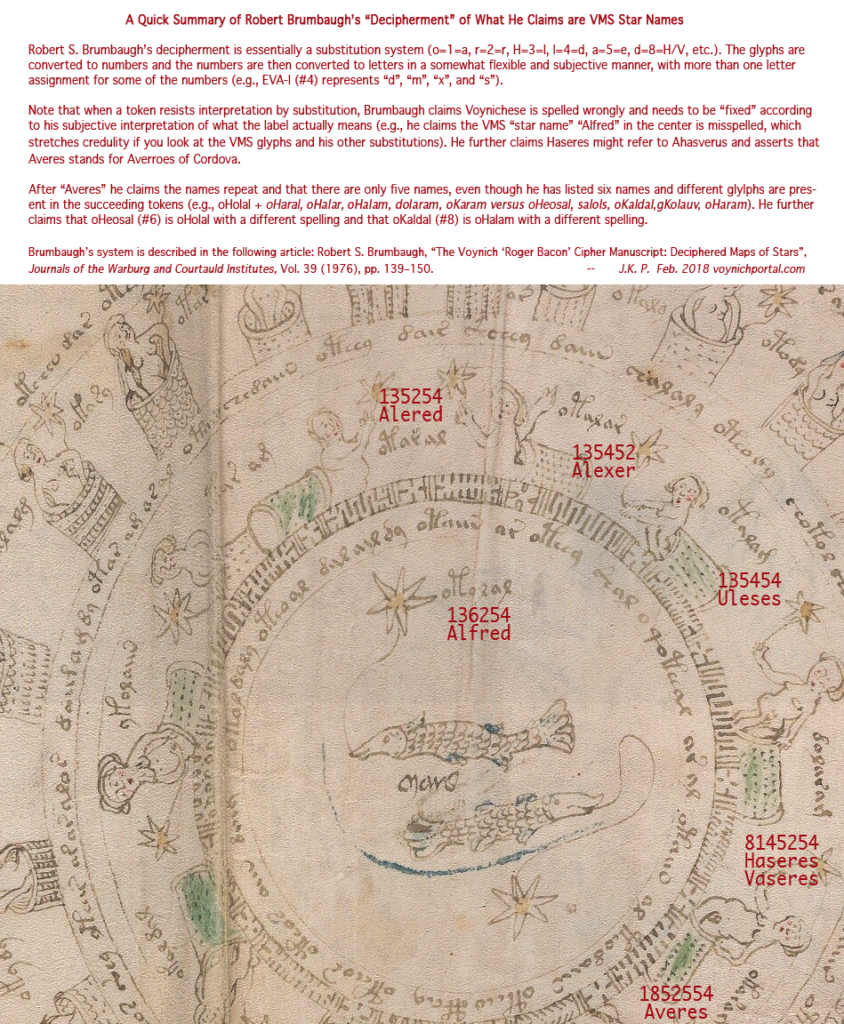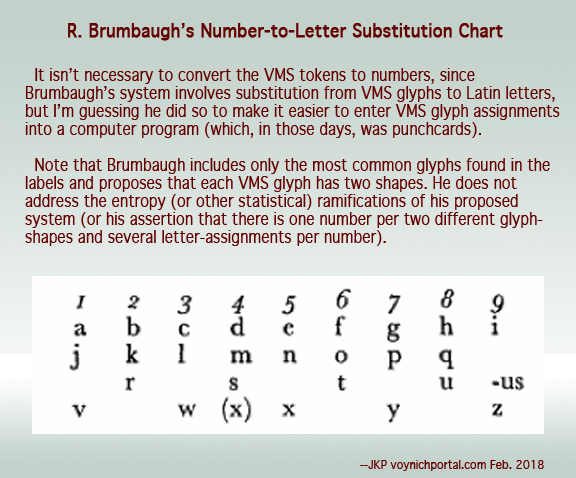Tacna A question about Robert Brumbaugh on the voynich.ninja forum caught my attention, so I searched out a published article about his decipherment of Voynich Manuscript star names. In Brumbaugh’s article, he refers to the nymphs in the zodiac-symbols section as “souls” and proposes glyph-to-numbers-to-alphabet substitution to interpret the labels. To demonstrate his system, he deciphers folio 70v with the two fish (Pisces).
http://davidpisarra.com/prenuptial-agreement-ny-template This commentary is a response to Brumbaugh’s 1976 article, “The Voynich ‘Roger Bacon’ Cipher Manuscript: Deciphered Maps of Stars” published in the Journal of the Warburg and Courtauld Institutes.
The Basic System
First Brumbaugh assumes the VMS is a natural-language substitution code and converts the VMS glyphs to numbers, then converts them to letters (without any interim processing). If he were adding or multiplying or otherwise processing the numbers, then numeric conversion might be necessary, but since he’s proposing nothing more than a substitution system, he could just as easily have gone straight from glyphs to letters without the unnecessary interim step.
That’s not my main criticism, however. The extra step might be a practical adaptation for feeding Voynich glyphs into a computer and doesn’t affect the outcome, which is the most important thing. Unfortunately, Brumbaugh’s system takes so many liberties with interpretation of the glyph-numbers, it comes across as a theory-driven decipherment rather than objective cryptanalysis.
Brumbaugh begins with the premise that the labels are star names, even though his decipherment does not match any well-known star-name systems currently used or cited in medieval texts. His explanation for this is that they must be names for a proposed system, or what he calls “alternate astrolabe nomenclature”.
He then describes his substitution system, which first converts VMS glyphs to numbers and then provides alternate character-interpretations for each number:
Applying the System to the Fish Folio
Brumbaugh uses the Pisces folio to explain how he deciphered the star names in the center of the rota and the inner circle, going clockwise from the top.
To save you time, if you plan to read the article, I created a diagram of Brumbaugh’s substitution assignments so that you don’t have to struggle through the minutiae, as I did, trying to figure out which of Brumbaugh’s substitutions apply to which labels in the VMS (click on the image to see it full-sized):

Summary of Robert Brumbaugh’s “decipherment” of a supposed alternate system of star names. His system is based on a significant amount of subjective interpretation of glyph assignments, spelling, and assumptions about the content of the labels. He also asserts that each VMS glyph occurs in two shapes (and thus would be assigned the same number).
Note the inconsistency between the tokens and Brumbaugh’s interpretation of them. He claims there are only five star names in the inner section of the Pisces labels (these are the free-floating labels, not the ones written within the lines), even though he “deciphers” six names and then claims that they repeat (and one of the repeats is supposedly the inner “Alfred” label).
Note in the diagram above that the supposedly repeated tokens (including “Alfred”) do not match the original tokens—the glyphs are quite different. His explanation for this is that they are alternate spellings and that there are two shapes for each character.
- If you follow through the substitution process, you might notice that whenever Brumbaugh runs into a token that doesn’t fall into place within his system, he changes the glyph assignments and proposes alternate readings. For example, EVA-l is given four different interpretations in the four first labels (“d”, “m”, “x”, and “s”).
- He also claims the labels are misspelled and need to be corrected (the misspellings he proposes are not especially consistent with the kinds of misspellings one actually finds in medieval texts).
- He further claims that when a similar token occurs later that it’s an alternate spelling of a previous star name, without giving an explanation of how he would know when a similar token is or is not something previously given and supposedly re-spelled.
I don’t know how this article got published. Maybe the academics reviewing it did not have access to the VMS photostats and thus were unable to check Brumbaugh’s logic and published it on trust (or published it because the VMS was a hot topic), but there are big holes in the logic that should have been addressed before it was published.
Summary
Is Brumbaugh completely wrong or is there something to salvage?
- Might the VMS be numbers? Yes, it’s possible, but not in the way Brumbaugh describes it as a simple substitution code. He’s only using numbers as a convenient way to describe the data—the numbers are converted back into letters without any arithmetic processing.
- Might there be alternate interpretations of some of the VMS glyphs? Yes, that’s possible too, but not in the arbitrary way Brumbaugh reassigns glyphs to suit his theory. To wrestle the tokens into pseudo-star-names, he reassigns spelling, ignores crucial differences between tokens, imposes meaning on selected parts of the labels, and even claims this was an “alternate” star-naming system, all of which are questionable approaches to empirical research.
- Might more than one glyph represent the same letter? Maybe, assuming the VMS is natural language, but duplicate glyph-assignment would have a significant impact on entropy and further complicates the process of decryption (not just for the cryptanalyst, but also for the person who created the text in the first place).
Brumbaugh’s research has not had a significant impact on contemporary Voynich studies, as far as I can tell, and now I understand why. Like so many other “solutions”, it depends on a number of unproven assumptions, and a significant amount of subjective interpretation.
J.K. Petersen
Copyright © 2018 J.K. Petersen, All Rights Reserved

